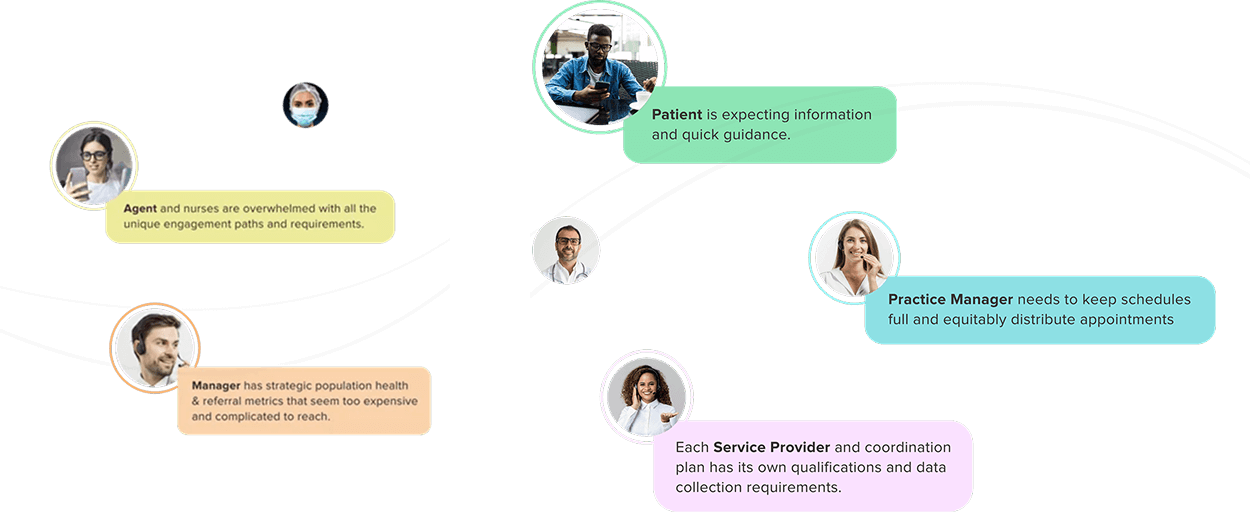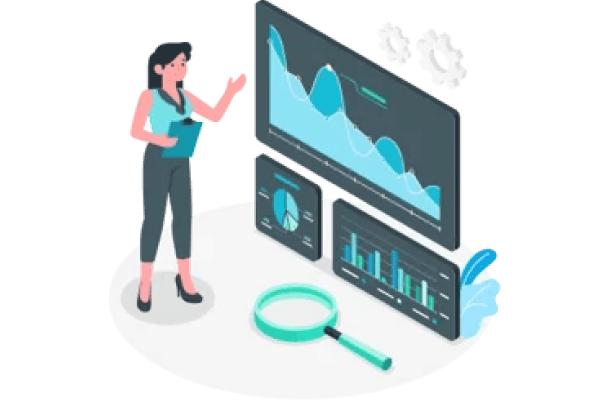EASILY ENGAGE PATIENTS WITH GUIDED ENGAGEMENT PLANS
Proactively engage patients based on their risk factors and history. Drive patients to preventive medicine and health education for their needs. Simplify care coordination. Our database of services uses the data from your health system to automate the resource-draining collection, approval, education & messaging requirements in an efficient, streamlined tool.
%20(1).png?width=599&height=610&name=image%2039%20(2)%20(1).png)
CAREDESK MEMBER ALERTS PROMPT USERS FOR PREVENTIVE SERVICES, ANNUAL FOLLOW-UPS, COMMUNITY SERVICES, AND MORE ALL BASED ON RISK FACTORS, VISIT HISTORY, AND YOUR CUSTOM LOGIC. BUILT INTO YOUR WORKFLOWS.

Proactively Offer Services
Get in front of your population health needs. Prompt your users to refer patients, based on either the patient history and current chief complaint. Guide patients to the closest service provider and follow-up with information and directions via the communication channel of their choice.
.png?width=610&height=500&name=Frame%20(1).png)
Easily Guide Users With Comprehensive Metadata
Each service has its own scripting, knowledge base, data collection forms, & geo-location logic. Call handlers simply follow the prompts & don’t need to navigate elsewhere or search third-party websites. Telemedicine made simple!

Automate Communication that both patients & Service Providers Love
Automatically coordinate referrals with automated communication tailored to each service you provide. Send the appropriate referral information to both the service and to the patient. Communication templates are tailored to the need and can use any data available, even letting you build calculations or conditional logic. Embed health information or visit specific instructions, including Google maps, & links for follow-up. Simple!
%20(1).png?width=610&height=500&name=Frame%20(3)%20(1).png)
Holistic Reports
Give your management the reports they want across all channels & correlated to your encounters. How many emergent cases resulted in users paging a physician? How many of these pages were returned before the patient was sent to the emergency room? Was the ER notified with documentation? Build the reports you need without a line of code.
%20(1).png?width=610&height=400&name=Frame%20(4)%20(1).png)
FAQ
1. What is patient engagement in healthcare?
Patient engagement refers to how actively patients participate in their own care including communication with providers, follow-up on treatment plans, and use of health tech tools like messaging, portals, and self-scheduling.
2. Why is patient engagement important?
Engaged patients are more likely to follow care plans, attend appointments, ask questions, and manage chronic conditions effectively. This leads to better health outcomes, fewer ER visits, and lower healthcare costs.
3. How does patient engagement affect clinical outcomes?
Patients who feel informed and involved in their care are more compliant with medications, more satisfied with their providers, and less likely to delay treatment or drop off care plans.
4. What are common barriers to patient engagement?
- Lack of access to information
- Complicated or outdated communication systems
- Language and health literacy challenges
- Time constraints and poor user experience in digital tools
5. What role does technology play in improving engagement?
Digital platforms (like automated messaging, patient portals, or smart scheduling) give patients more control and convenience. They reduce friction, improve communication, and make it easier for patients to stay on top of their care.
6. Can better engagement reduce no-show rates and cancellations?
Yes. When patients receive timely reminders, self-scheduling options, and two-way messaging, they are far more likely to confirm, reschedule, or show up for visits. This reduces operational waste.
7. How do healthcare providers benefit from better patient engagement?
Providers see higher satisfaction scores, reduced administrative burden, and fewer missed or unnecessary visits. Engaged patients also provide more complete health information, improving care quality.
8. What types of tools improve patient engagement the most?
- Secure two-way
- Smart appointment scheduling
- Post-visit summaries and instructions
- Mobile-friendly communication channels
- Educational content and follow-up prompts
9. Is patient engagement only a digital problem?
No. While tech can help, engagement is also about culture and communication. Trust, accessibility, empathy, and provider responsiveness are key to building long-term patient involvement.
10. How can we measure the success of patient engagement efforts?
Healthcare providers can look at metrics like:
- Appointment attendance
- Portal usage rates
- Message response times
- Patient satisfaction scores
- Medication adherence
- Preventive care uptake
KEEP PATIENTS INFORMED AND INVOLVED
Easily Guide and Engage Your Patients
Deliver timely follow-ups, education, and care reminders without manual effort, especially for busy clinical teams.
